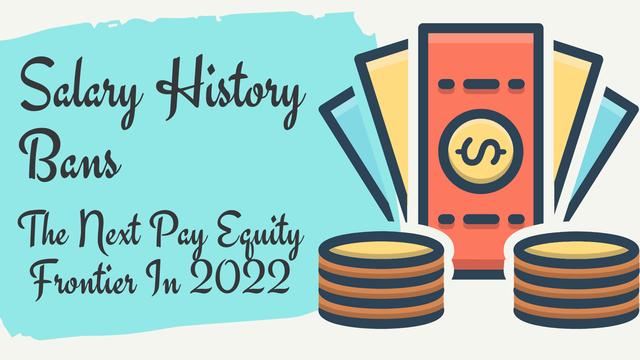Pay transparency is coming, in a big way. New York City employers are about to be required to tell the world how much their jobs pay. While several jurisdictions have more limited disclosure requirements, New York City would join only Colorado requiring this information be included in job postings. These disclosure laws arguably require the most organizational change, internal socialization, and planning of any of the current pay equity laws. So, this is big news.
Pay Transparency Is an Accelerating Trend
On Jan. 15, New York City followed nine other jurisdictions that require some pay-scale disclosure.
This trend started in 2018 when California first required employers to provide the pay scale to external applicants, but only if it was requested by the applicant and then only after the applicant completed their first interview.
Similar laws were enacted in Maryland (disclosure upon request) and in Ohio in Cincinnati and Toledo (disclosure after conditional offer of employment). Washington state enacted a slightly expanded pay scale disclosure law, which required providing the pay scale to both external candidates and internal employees but only upon request after initial offer. Not surprisingly given that most job seekers are not employment law experts, these requests were few and far between for most employers.
In 2021, the pay scale disclosure laws morphed, with laws in Connecticut, Nevada, Rhode Island, and Colorado requiring proactive disclosure of pay scale information. In Connecticut, for example, employers must provide the wage range to external candidates at offer (or earlier, if requested) and to current employees at hire, when an employee changes role, or upon first request.
In Nevada, employers must provide it to external applicants post-interview, and to current employees interviewing for new roles, if requested. Soon Rhode Island will require employers to provide scale information to new hires, to employees who move into new positions, and upon request. And the sweeping law in Colorado, like the proposed New York City law, requires including that information in job postings for new hires, promotions, and transfers, among other requirements.

Mayor Eric Adams’ failure to act on the NYC pay scale rule, means the NYC rule will become effective on May 15, 120 days after it became law.
Other states and even the European Union are also considering pay scale legislation.
As increasing numbers of employers will need to disclose pay scales, employees will be calling for more transparency, adding tailwind to an accelerating trend.
Posting Ranges Is More Complex Than Meets the Eye
With these pay scale disclosure laws come enormous organizational change, internal socialization, and planning. Here’s why: It is challenging to consistently post accurate salary ranges on jobs—and it is even more complex to do so without risking blowback.
For employers with at least four NYC employees, now is the time to consider how to comply with the NYC pay scale disclosure rule coming this spring, when employers and their agents will be required to post the minimum and maximum salary on all job postings. The rule does not define salary, nor does the law specify whether the rule applies to remote work that could be performed in NYC.
How should employers comply? Most importantly, employers must determine the accurate pay range and make sure recruiters get it right on every applicable job posting. Knowing the right range to post requires more than market data.
The New York City law, for example, requires posting the “lowest to the highest salary the employer in good faith believes at the time of the posting” it would pay for the job. So even determining the range requires thoughtful consideration.
Even more importantly, before posting ranges, employers need to view them through the eyes of their employees — some of whom may be seeing them for the first time. If incumbent employees ask questions about their placement in the ranges after seeing a job posting for a similar position on the internet, are their managers prepared to answer? Can managers answer what employees need to do to earn more? Or if there are race or gender pay disparities?
Remember, Pay Is Just the Beginning of Transparency
Pay scale transparency is just the tip of the spear when it comes to a changing regulatory and legal landscape involving greater transparency.
The Securities and Exchange Commission is actively considering recommendations to enhance disclosures regarding the diversity of board member nominees while requiring robust disclosures of human capital management.
On Wall Street, the Institutional Shareholder Services (ISS), which provides data analytics to investors around the world, proposed benchmark policy changes for 2022. Currently, ISS policy requires voting against companies in the Russell 3000 and S&P 1500 where there is no diversity on the company’s board. Proposed changes will expand this policy to apply to more companies.
California employers must file their second annual pay report in March and Illinois employers are required to file a new equal pay report as soon as March.
And more shareholders are asking corporations to disclose gender and diversity data, often in the form of an EEO-1 Report.
To Start, Get Pay Right
So how should you meet the challenge of greater transparency?
Forward-thinking companies often start by getting pay equity right. But these goals are not achievable without an ambitious strategy to constantly measure and assess pay gaps, reform pay practices, and get starting pay right, every time and in real-time.
The risks of getting this wrong—especially during the Great Resignation—are enormous, given the direct link between pay transparency and employee retention. In the absence of having accurate ways of determining and reporting this information, companies will be at a competitive disadvantage and risk not staying in compliance.
Put another way: If a pay transparency strategy is not on your 2022 road map, it should be.
This article does not necessarily reflect the opinion of The Bureau of National Affairs, Inc., the publisher of Bloomberg Law and Bloomberg Tax, or its owners.
Write for Us: Author Guidelines
Author Information
Christine Hendrickson is the vice president of strategic initiatives at Syndio, which provides advanced technology solutions and expert advisers to assist employers with real-time pay and workplace equity. Before joining Syndio, she was a partner and co-chair of the pay equity group at Seyfarth Shaw LLP.




